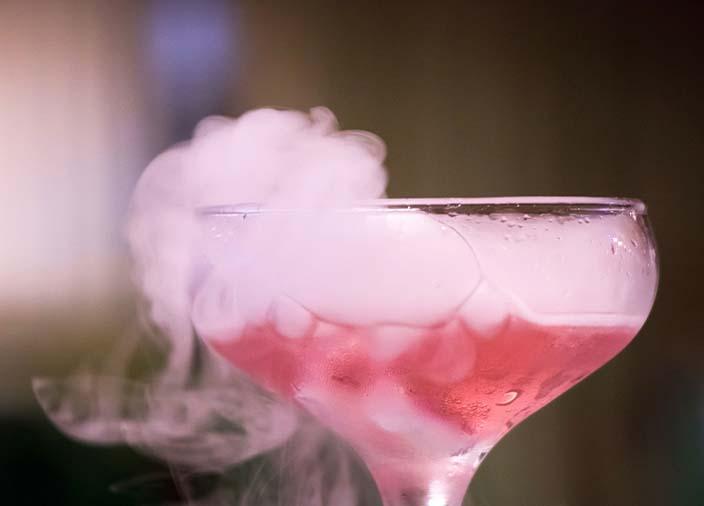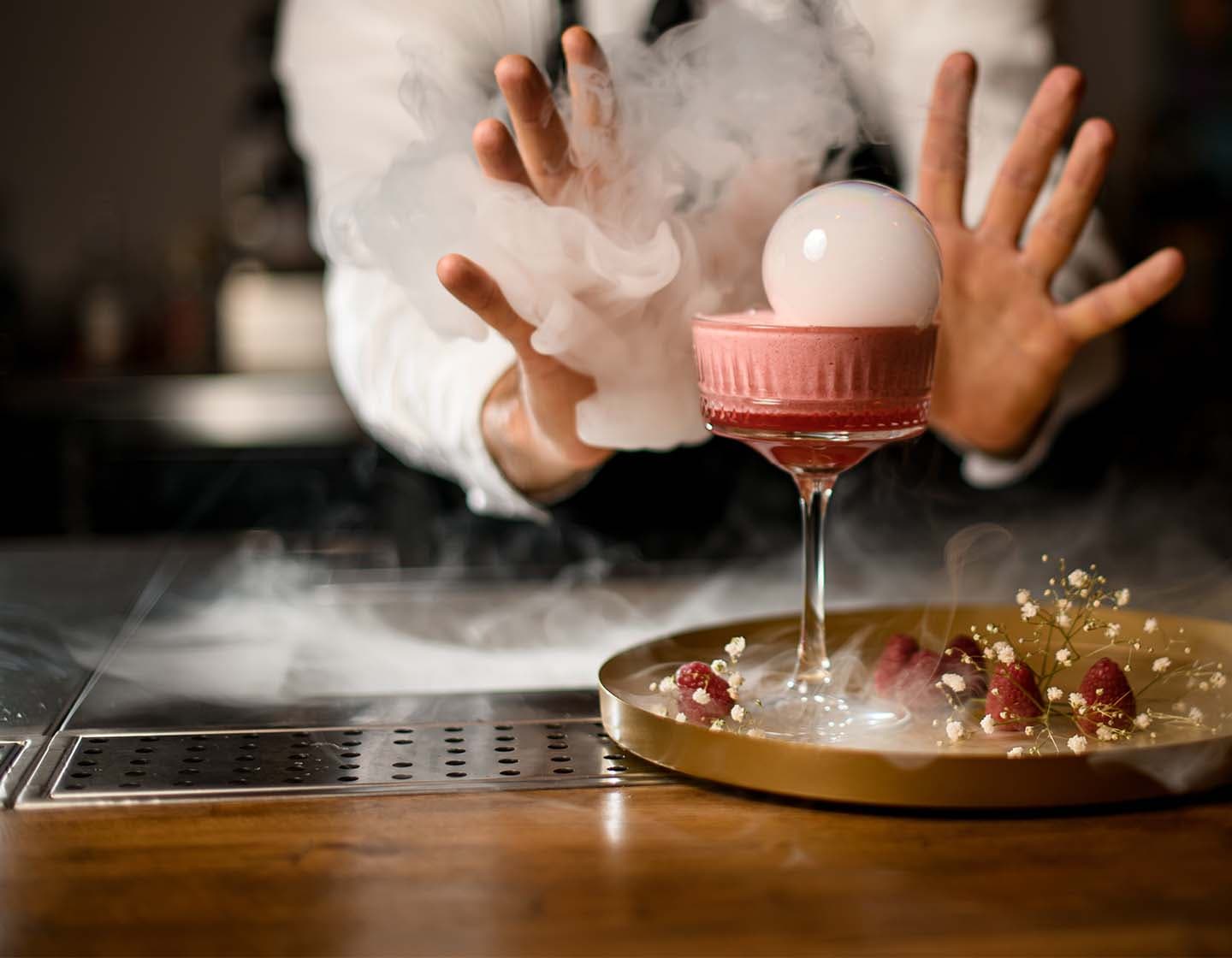Using Dry Ice and Liquid Nitrogen in Cocktails
Explore the use of dry ice and liquid nitrogen in your cocktails, learn applications and understand how to use these ethereal elements safely to wow your guests.
Estimated reading time: 4 minutes
Using Dry Ice and Liquid Nitrogen in Cocktails
In the world of cocktail creation, dry ice and liquid nitrogen techniques bring a touch of the theatrical to the bar, transforming beverages into otherworldly elixirs. These techniques can however be extremely dangerous to both bartenders and guests if not treated with appropriate caution.
Explore the allure, learn different applications and understand how to use these ethereal elements safely to wow your guests.
Culinary Origins
The use of dry ice and liquid nitrogen in gastronomy is credited to pioneers of molecular gastronomy, such as Chef Ferran Adrià. As avant-garde culinary techniques trickled into the world of mixology, bartenders began experimenting, realising the potential of these substances to enhance aesthetics and palate.
Temperature and Texture
Both dry ice and liquid nitrogen are more than mere chilling agents. Their allure is multifaceted:
- Visual Drama: The misty plumes they produce create an atmosphere of mystery and anticipation.
- Rapid Cooling: Both substances offer swift chilling capabilities, far surpassing traditional ice.
- Texture Transformation: Especially with liquid nitrogen, mixologists can create unique textures like frozen foams or instant sorbets.

4 Key Tools and Techniques
- Dry Ice Pellets: Dry ice, often used in pellet form, is dropped into drinks, where it sinks to the bottom and effervesces, creating rolling mists.
- Liquid Nitrogen Pour: Liquid nitrogen is usually poured over ingredients or into the drink, freezing elements instantly.
- Dewar Flasks: Used to store and handle liquid nitrogen.
- Safety Gloves and Goggles: Essential for safely handling these extremely cold substances.
Four Applications in Contemporary Cocktails
- Smoky Sips: Dry ice adds a foggy, mysterious aura to cocktails, especially fitting for themed nights or special occasions.
- Frozen Garnishes: Liquid nitrogen can flash-freeze fresh fruits or herbs, creating crunchy garnishes that contrast with the drink's liquid nature.
- Instant Slushies: Rapidly chilling a liquid mix with liquid nitrogen yields a slushy texture, offering a novel take on classic cocktails.
- Effervescent Effects: As dry ice sublimates, it creates carbonation in some beverages, adding a fizzy touch.
Four Safety Considerations
The use of dry ice and liquid nitrogen is not without risks, and bartenders must adhere to strict safety guidelines:
- Never Enclose: Dry ice should never be enclosed in a sealed container, as the pressure from the gas can cause it to explode.
- Safe Consumption: Drinks with dry ice should only be consumed after the dry ice has fully sublimated. Alternatively, the dry ice could be placed in a separate vessel and served alongside the drink. Similarly, liquid nitrogen should evaporate fully before a drink is consumed.
- Burn Hazards: Both substances can cause cold burns on contact with skin. Proper safety gear and handling techniques are vital, and guests must be informed of the dangers and guided safely through the process.
- Storage: Liquid nitrogen requires storage in special containers, and both substances should be stored in well-ventilated areas.
When handled with precision, safety and care, these ethereal elements can transform ordinary drinks into extraordinary elixirs to excite the guests’ senses and offer a truly otherworldly drinking experience.
Key Takeaways
- Cocktail theatre: The use of dry ice and liquid nitrogen in cocktails offers a touch of the theatrical for bars.
- Safety is paramount: Never enclose dry ice; ensure safe consumption after the ice has sublimated; use proper safety gear when handling these elements; ensure correct storage.
- Special effects: Practical applications include smoky visual effects for themed cocktails, flash-frozen fruits and garnishes, instant slushies, and effervescent effects.
- Essential tools: Dry ice pellets, Dewar flasks, safety goggles and gloves.
- Exciting elements: In the hands of trained and innovative bartenders, the mist of dry ice and the chill of liquid nitrogen become tools to elevate, enchant, and excite.
